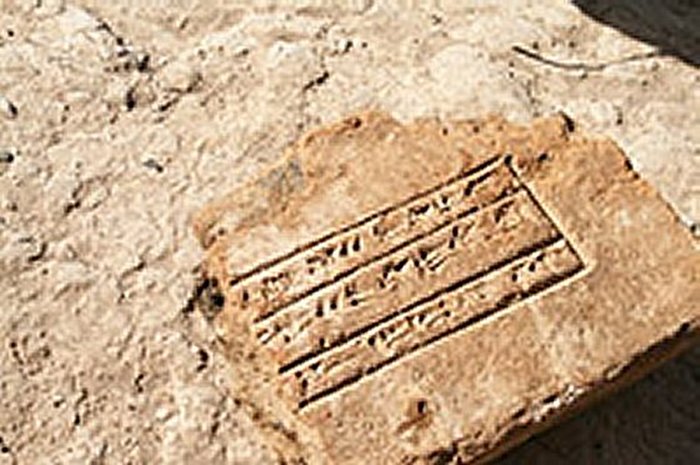Lost Kingdom Of Idu And Its Seven Unknown Kings
A. Sutherland - AncientPages.com - An ancient city called Idu (now Satu Qala) was long hidden beneath a mound, and a few years ago, it was finally unearthed in northern Iraq.
Ancient Idu Kingdom - Glazed brick SQ 10-10 (measurements: 37.0 x 37.0 x 8.5 cm). Source
Mentioned in the 2nd millennium BC, Idu was a major center and the capital of the central province of Assyria. As located at the gate that leads from the plains of the west to the mountains of the east and northeast, Idu was a significant crossroad of two axes, south-north, and west-east. In the region met many people like Hurrians, Babylonians, and Assyrians.
This historical and archaeological place, even today, separates two central provinces from each other: Erbil and Kirkuk.
The oldest written evidence concerning the region of Idu comes from the Ur III period. Destroyed due to temporary military campaigns, Idu finally appeared again in the Middle Assyrian period under its old name, but this time as a flourishing center and capital of its region.
 King Sennacherib and his crown prince Arda-Mullissi after the battle of Lachish in 701 BC. From the palace at Nineveh. Source
King Sennacherib and his crown prince Arda-Mullissi after the battle of Lachish in 701 BC. From the palace at Nineveh. Source
Middle Assyrian control over the provinces weakened, and an independent royal dynasty arose in Idu. It was towards the end of the Middle Assyrian period. Cuneiform writing uncovered on the site described Idu as a flourishing kingdom for 140 years.
According to inscriptions at the site, at least seven successive kings with Semitic and Hurrian names ruled Idu. Six of the kings worked to build and expand the local palace center.
The title of "kings of the land of (the city of) Idu" implies that the kingdom extended beyond the immediate city area.
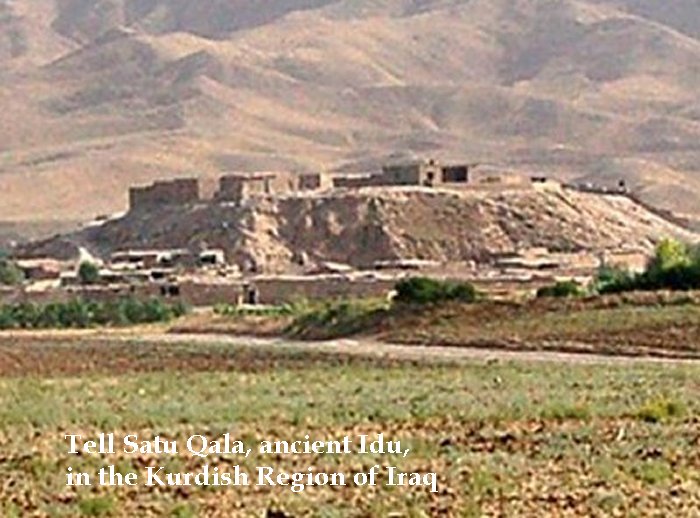 Ancient ruins of Idu. Source
Ancient ruins of Idu. Source
By the end of the 10th century BC, Assyria again appeared on the scene to reclaim some of the territories the empire had lost at the end of the 2nd millennium. Archaeological excavations revealed scrolls with images of griffons and sphinx statues that once decorated King Ba'auri's grand palace.
Based on findings made by a team of archaeologists from the University of Leipzig, Germany, Idu was under the control of the Assyrian Empire about 3,300 years ago, then later gained its independence as the empire declined.
Tell Satu Qala is situated along the Little Zab in Iraqi Kurdistan. 2008 an ancient palace center was discovered during excavations near Satu Qala.
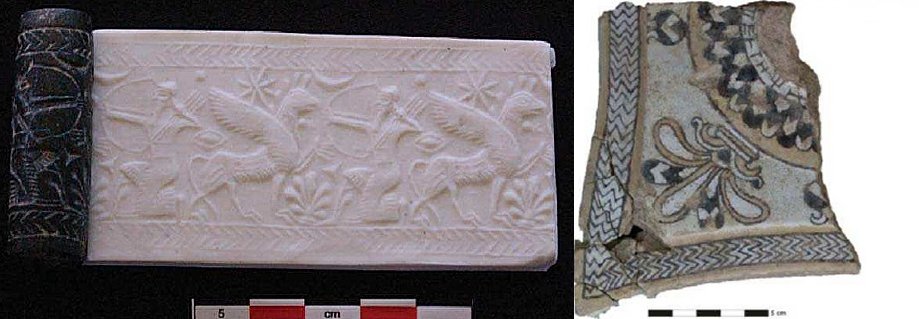 Kingdom of Idu - Cylinder seal; wall peg. Source
Kingdom of Idu - Cylinder seal; wall peg. Source
The area was carefully examined when an inscribed mudbrick came to light that identified it as ancient Idu, the provincial capital of the Assyrian Empire that was already known from other texts.
In 2010 and 2011, a team of archaeologists from several German universities carried out small-scale excavations resulting in the recognition of archaeological material ranging from the fourth to the first millennium BC.
Numerous inscribed mudbricks were found during these excavations, from which the names of at least seven local kings, previously unknown, could be reconstructed.
Moreover, the find of a wall peg with the partly preserved name of Assurnasirpal II indicates that Idu was firmly part of the Assyrian Empire at the time.
Idu is one of the crossing points from south to north. These were essential routes to Iran in the east and Babylonia in the south.
Inscriptions from Satu Qala (Idu) - Glazed brick (measurements: 25.5 x 19.0 x 8.0 cm). Photo credit: Leiden University.
"The role of the Lower Zab as a regional boundary goes back to much older periods. In the Middle Babylonian and Middle Assyrian periods, the Lower Zab region was the subject of long-term dispute between the two states, and the boundary was eventually set there only after peace had been concluded.
The Assyrians reconquered the city about 140 years later. Researchers have found artwork, including a bearded sphinx with a human head and the body of a winged lion, and a cylinder seal dating back roughly 2,600 years depicting a man crouching before a griffon. Also, the city's name was revealed during excavations in the area in 2008 when a resident from a nearby village brought them an inscription with the name carved in it.
Written by – A. Sutherland - AncientPages.com Senior Staff Writer
Updated on July 25, 2023
Copyright © AncientPages.com All rights reserved. This material may not be published, broadcast, rewritten or redistributed in whole or part without the express written permission of AncientPages.com
Expand for referencesMore From Ancient Pages
-
 Circular-Shaped 4000-Year-Old Wooden Henge Discovered In Yorkshire, Historic County of Northern England
Archaeology | Jan 3, 2018
Circular-Shaped 4000-Year-Old Wooden Henge Discovered In Yorkshire, Historic County of Northern England
Archaeology | Jan 3, 2018 -
 Early Harappan Cultures Can Solve Mysteries Of Several Lost Cities Of Indus Valley Civilization
Artifacts | May 30, 2019
Early Harappan Cultures Can Solve Mysteries Of Several Lost Cities Of Indus Valley Civilization
Artifacts | May 30, 2019 -
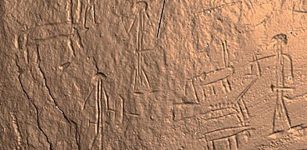 Ancient Rock Engravings Unveil Intriguing Insights Into Human Cultures
Archaeology | Jul 4, 2023
Ancient Rock Engravings Unveil Intriguing Insights Into Human Cultures
Archaeology | Jul 4, 2023 -
 5,000-Year-Old Arminghall Henge In Norwich Reveals Some Of Its Secrets
Archaeology | Dec 20, 2022
5,000-Year-Old Arminghall Henge In Norwich Reveals Some Of Its Secrets
Archaeology | Dec 20, 2022 -
 Underwater Excavations: Greek And Danish Archaeologists Research Ancient Harbor Town Lechaion
Archaeology | Dec 25, 2015
Underwater Excavations: Greek And Danish Archaeologists Research Ancient Harbor Town Lechaion
Archaeology | Dec 25, 2015 -
 First Peoples Of Japan: Ainu Civilization And Its Unknown Origin
Ancient Mysteries | Oct 18, 2014
First Peoples Of Japan: Ainu Civilization And Its Unknown Origin
Ancient Mysteries | Oct 18, 2014 -
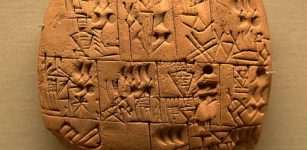 Uruk – Home To The Legendary Hero Gilgamesh
Featured Stories | Jun 6, 2021
Uruk – Home To The Legendary Hero Gilgamesh
Featured Stories | Jun 6, 2021 -
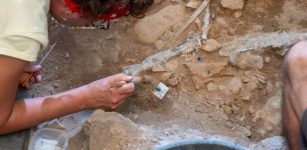 3D Models Used To Study Linya, The Prehistoric Woman Who Lived 14,000 Years Ago In Pyrenean Foothills
Archaeology | Aug 5, 2023
3D Models Used To Study Linya, The Prehistoric Woman Who Lived 14,000 Years Ago In Pyrenean Foothills
Archaeology | Aug 5, 2023 -
 Anaximander Of Miletus: Father Of Cosmology, Pre-Socratic Greek Philosopher Who Discovered Equinox, Solstices And Gnomon
Featured Stories | Mar 7, 2019
Anaximander Of Miletus: Father Of Cosmology, Pre-Socratic Greek Philosopher Who Discovered Equinox, Solstices And Gnomon
Featured Stories | Mar 7, 2019 -
 Mysterious Ancient Tomb Reveals ‘Impossible’ Cosmic Connection – Wrong Identity – Part 1
Ancient Mysteries | Oct 11, 2020
Mysterious Ancient Tomb Reveals ‘Impossible’ Cosmic Connection – Wrong Identity – Part 1
Ancient Mysteries | Oct 11, 2020 -
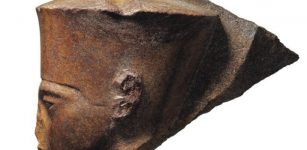 3,000-Year-Old Tutankhamun’s Head Sculpture Is Expected To Be Sold On Thursday In London
Archaeology | Jul 2, 2019
3,000-Year-Old Tutankhamun’s Head Sculpture Is Expected To Be Sold On Thursday In London
Archaeology | Jul 2, 2019 -
 Rock-Hewn Ancient Churches Of Lalibela
Civilizations | Aug 22, 2018
Rock-Hewn Ancient Churches Of Lalibela
Civilizations | Aug 22, 2018 -
 The Hidden History of China’s Secret Societies
Featured Stories | Nov 23, 2014
The Hidden History of China’s Secret Societies
Featured Stories | Nov 23, 2014 -
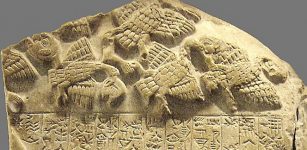 Sumerian Stele Of The Vultures: Oldest Known Historical Records Carved On Limestone
Featured Stories | Sep 1, 2016
Sumerian Stele Of The Vultures: Oldest Known Historical Records Carved On Limestone
Featured Stories | Sep 1, 2016 -
 On This Day In History: “Man In The Iron Mask” Died In The Bastille, Paris, France – On Nov 19, 1703
News | Nov 19, 2016
On This Day In History: “Man In The Iron Mask” Died In The Bastille, Paris, France – On Nov 19, 1703
News | Nov 19, 2016 -
 Burial Of Queen Of Emma Of Normandy Discovered In Winchester Castle
Archaeology | Nov 2, 2021
Burial Of Queen Of Emma Of Normandy Discovered In Winchester Castle
Archaeology | Nov 2, 2021 -
 Perforated Shells Were Used By Humans 120,000 Years Ago
Archaeology | Jul 10, 2020
Perforated Shells Were Used By Humans 120,000 Years Ago
Archaeology | Jul 10, 2020 -
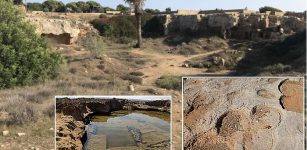 Rediscovery Of Lost Tombs And Quarries On A British Military Base In Cyprus
Archaeology | Mar 7, 2024
Rediscovery Of Lost Tombs And Quarries On A British Military Base In Cyprus
Archaeology | Mar 7, 2024 -
 New Discovery: Unknown Use Of Yellow Colors In Ancient Egypt – Revealed
Archaeology | Oct 16, 2019
New Discovery: Unknown Use Of Yellow Colors In Ancient Egypt – Revealed
Archaeology | Oct 16, 2019 -
 On This Day In History: Universal Declaration Of Human Rights Adopted – On Dec 10, 1948
News | Dec 9, 2016
On This Day In History: Universal Declaration Of Human Rights Adopted – On Dec 10, 1948
News | Dec 9, 2016


